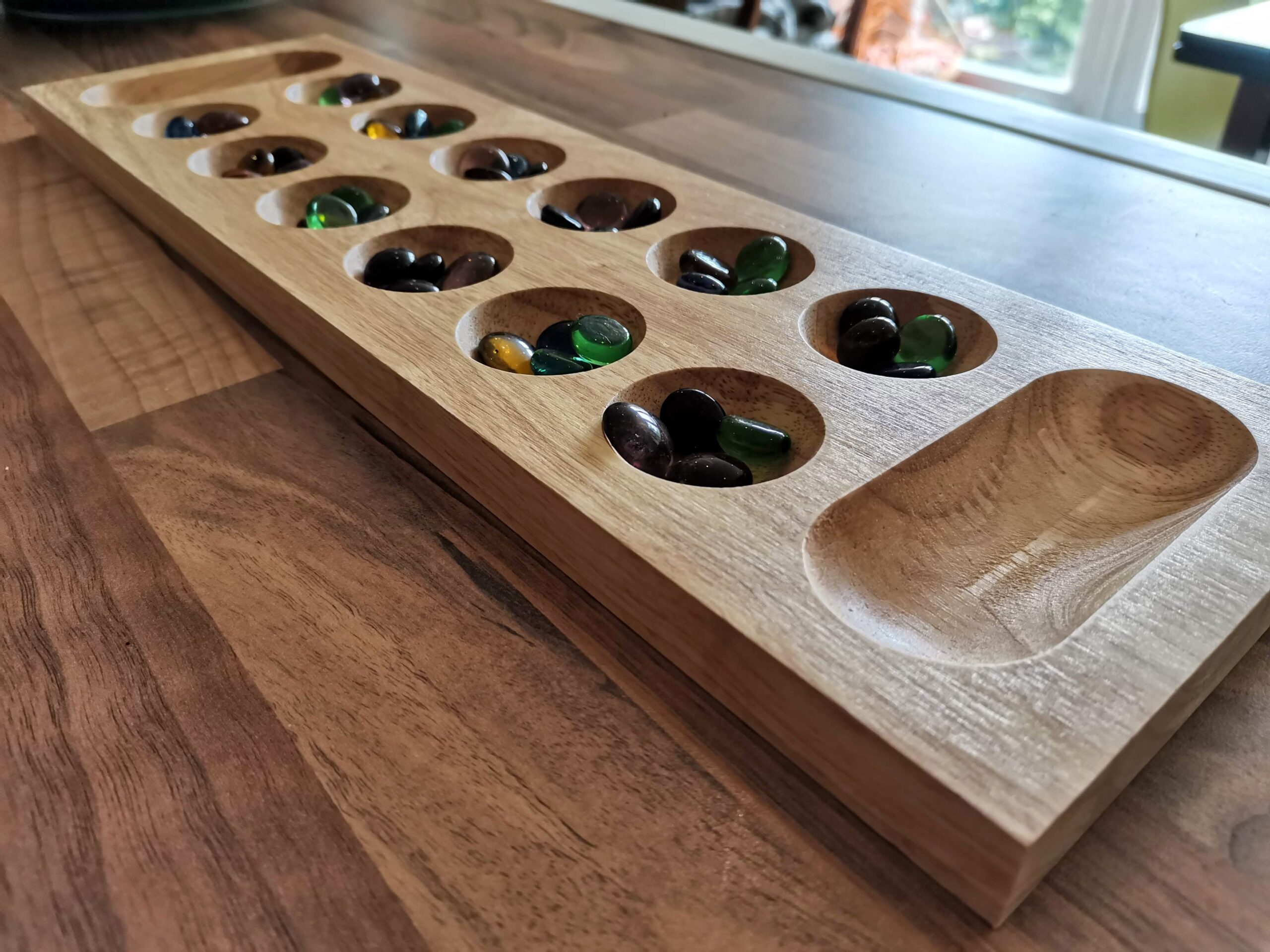Ultimate Voyage Preview
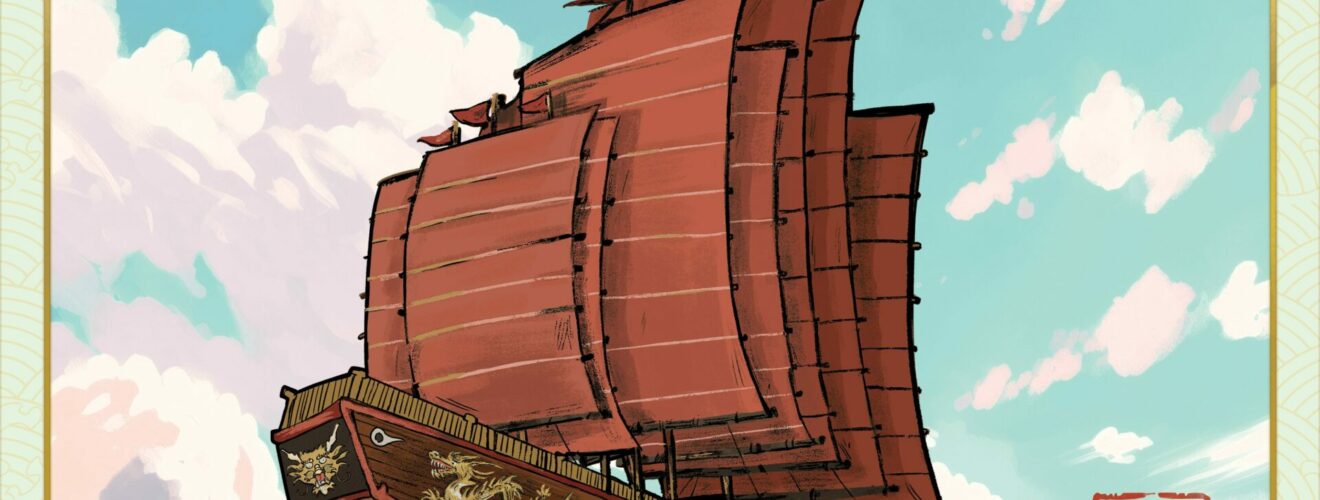
Disclaimer: this preview was written using a prototype copy of the game. All rules, artwork, and components are subject to change before fulfilment.
By using a combination of dice, cards, and resources in a way I’ve not encountered before, Ultimate Voyage feels fresh. It feels different and unfamiliar. The layers of strategy mixed with the unknown all go toward making a game that almost certainly has no counterpart in your collection, so if you’re looking for something different to bolster your shelves, this may well be it.
There’s a lot going on in the game, but I’ll do my best to summarise. Ultimate Voyage is set around the final voyage of Zheng He. He is regarded as the greatest admiral in Chinese history. The game sees you taking the role of one of a number of different characters joining He in his travels. You’ll explore, trade, build, engage in combat, and even diplomatic relations with nations from East Asia to Africa and the Middle East.
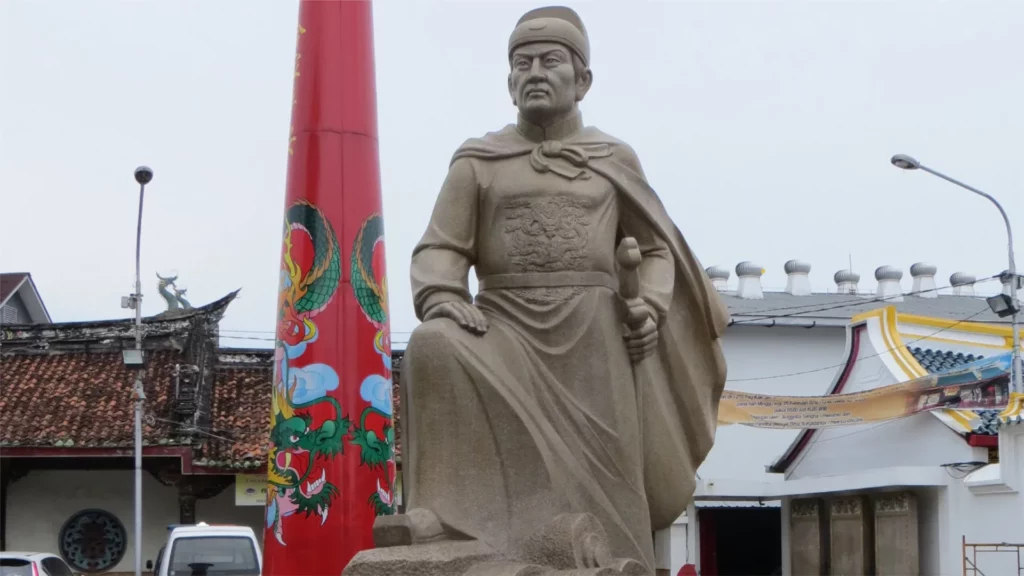
Action stations
The core of Ultimate Voyage revolves around the action card system. In a nod to games like Ark Nova, each of the cards above your player board is used for a different action. Sailing, Combat, Building, Trade etc. I mentioned Ark Nova because the position of each card dictates its power. The card on the left has a strength of one, the card on the right has five power. That’s where the similarities end though. Cards can gain power-ups adding +1 or +2 to their actions, and each round sees three deity dice rolled which players share. The dice’s values are applied to three dials on your player board, and by discarding one you can add its value to an action’s strength.
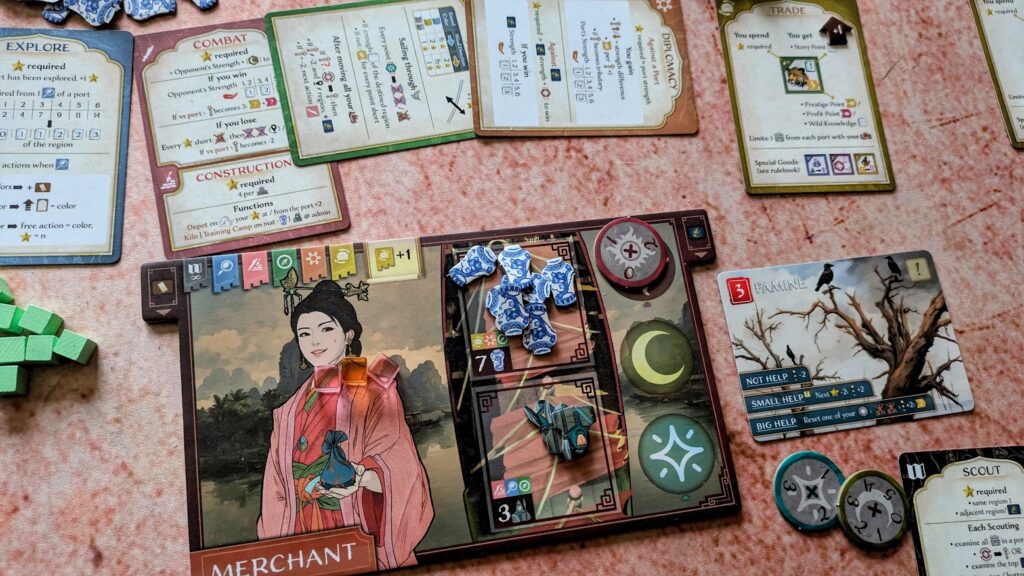
When you use a card you ‘tap’ it by turning it 90 degrees. In an unusual twist though, you can still use that card again in the same round, but a tapped card has a base strength of zero. Enough extras from spent resources and dials means that you can still get some value from it. I really like this idea. You can truly min-max and go for that double combat round to really put the cat among the pigeons.
It’s when the round ends that things take another twist. If you’re used to Ark Nova you know that when a card is used it slides to the left, bumping the others to the right. Ultimate Voyage messes with the status quo a bit. When the round ends and your unspent cards slide to the right, the cards you used slide to the left, but you choose their relative order. So if that Trade card you really wanted to use would be in the first slot by default, you can choose to move it up to the third instead. It’s a really interesting twist which means no more dead turns while you wait for the actions you want to use to increase in power.
The spirit of adventure
This is a game of exploration and adventure. Lots of games offer the feeling of exploration in differing ways. Flipping tiles to see what’s on the other side for example, like in Revive (review here). Exploration in Ultimate Voyage is different and truly random. When you first sail you ship into an unexplored region you roll one of the deity dice to determine its standing. You could get really lucky and find that you immediately have great relations with you – happy days! Or you might roll badly and find that the port is actively hostile. In theory, you could uncover hostile port after hostile port, meaning your next turns are built around trying to do something about them.
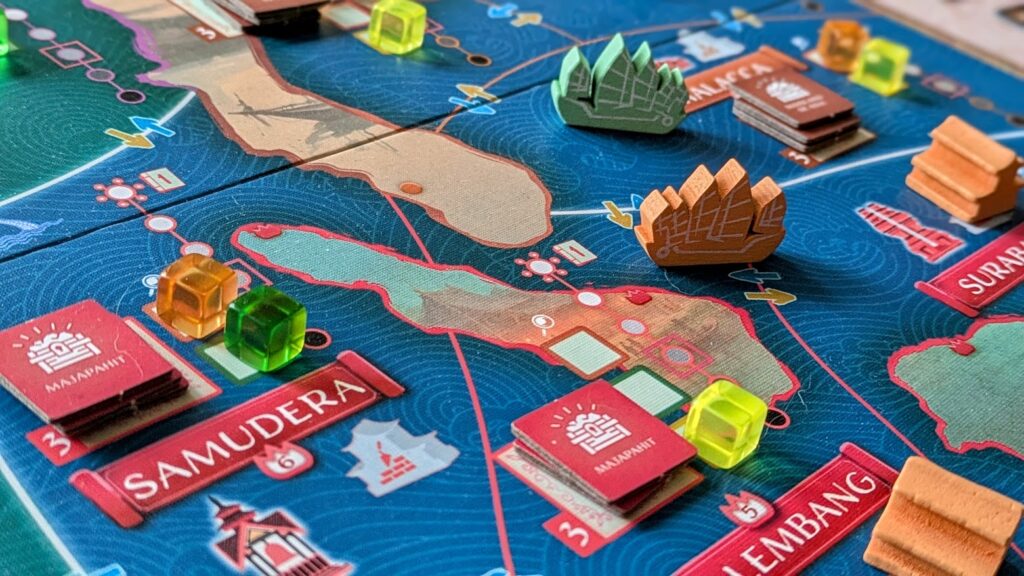
Some people won’t like this. They like to know there’s some determinism in proceedings. They like to know “If this port is hostile, it means none of the others will be, so they’re safe to explore”. Personally, I really like this system. It means the map feels different every time you play. Sometimes you’ll be charging through the seas with reckless abandon, other times it’s more like tip-toeing around in a stealth pedalo.
There are lots things you can choose to do while you’re at sea, too, which means the game can get pretty asymmetric, pretty quickly. Although you’re all navigating the same waters and still at the whim of the meteorological gods (each round has favourable winds in one direction, and you may encounter a storm), you might be doing very different things, especially if you choose to lean into your character’s speciality. The Merchant, for instance, begins the game with a boosted trade action. Getting into port and seeing what’s on offer to fill your hold with might be your focus, while the Commander with his +2 combat action is out looking for trouble.
Spoiled for choice
Ultimate Voyage feels more like a 4X game than your standard pick-up-and-deliver. There’s so much going on that you can approach each game differently to see how things work out for you. There’s a big porcelain tower at the starting area of Nanjing, but you don’t have to contribute towards building it at all if you don’t want to. You each have some little wooden buildings to deploy, but as well as building at the ports you visit, you can build on your player boards too to increase your income of troops and porcelain – the game’s two resource types.
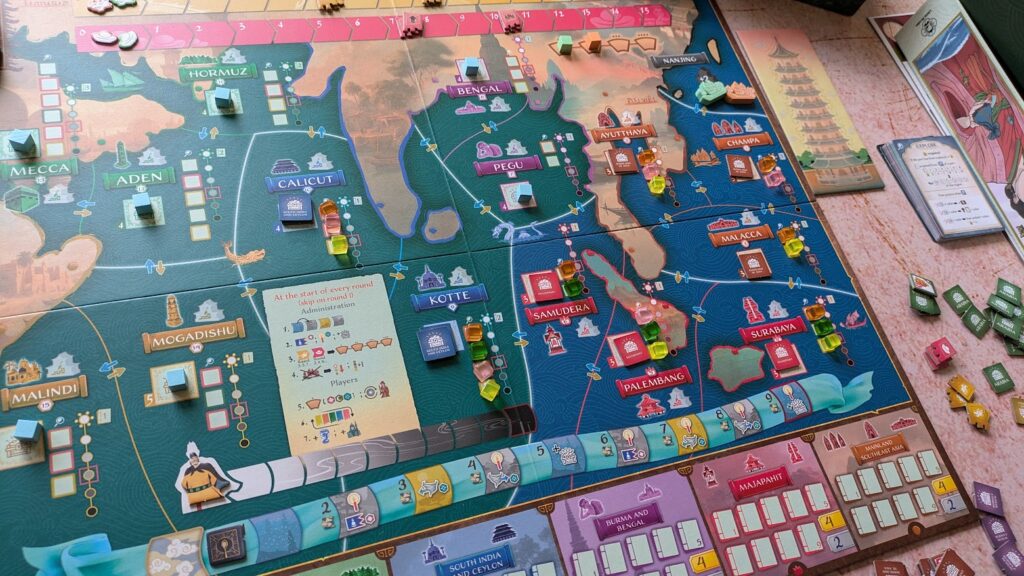
You might excel at diplomacy and create tributaries in some of the ports you visit, but like a high-maintenance spouse, they need attention. If you don’t keep a ship in port at the end of a round your reputation with the city deteriorates. No problem, just build more ships. But now you’re building ships when you wanted to be trading and engaging in naval warfare. The game has a sandbox feel to it, letting you play in the seas to figure out your own path to victory. That might not be for everyone, some people like more structure to their games. It’s better to know that ahead of time, which is why I’m telling you now.
You can even create semi-alliances with the other players, offering support for their combat encounters in return for… well, I’ll leave the details up to you. The point is, that it’s very unusual for this style of game of throw-in semi-coop parts to what’s unfolding on the board, and I respect the heck out of the designer for trying something different.
The biggest downside to all this variability and different ways to approach the game is that it’s pretty tough to learn. Working out the strength of an action and how that can be applied to the various actions adds a mental overhead. I recommend approaching your first play as an exercise in pulling levers and pushing buttons and seeing what happens, because it won’t be immediately apparent how to build a strategy.
Final thoughts
Ultimate Voyage is a unique game. A contract-fulfilment, area control, pick-up hybrid which would feel like more like a 4X game if there was PvP combat. The card system is a really nice tweak to something that feels immediately familiar if you’re used to Ark Nova, but with much more scope to do unusual things.
It plays from one to four players, but for me this is a game which thrives with more people. It works with two, and it’s still enjoyable, but it’s better with three and four. I think that comes down to the way the map gets limited with two players. It has you block out half the map so that you can’t visit lots of places. I appreciate that it keeps the action in a smaller, more concentrated area, but it also means you never venture as far west as Africa and the Middle East, and you don’t quite get that same feeling of heading out on a grand voyage.
All of that said, what Leonard and his team have created as a debut game is very impressive. A big vision, and a really unusual setting and theme which feels exotic and fresh to me. I’ve played so many games set in and around European history that the introduction to Zheng He and his stories is very welcome. Take all I’ve said here with a small pinch of salt because it is still in a prototype form, and even in the short time I had the game here there were several amendments and changes made.
If the setting and the idea of a game that does something differently to most other games you’ve played appeals to you, keep an eye out for Ultimate Voyage when it on the preorder site.
Preview copy kindly provided by Little Monks. Thoughts and opinions are my own.
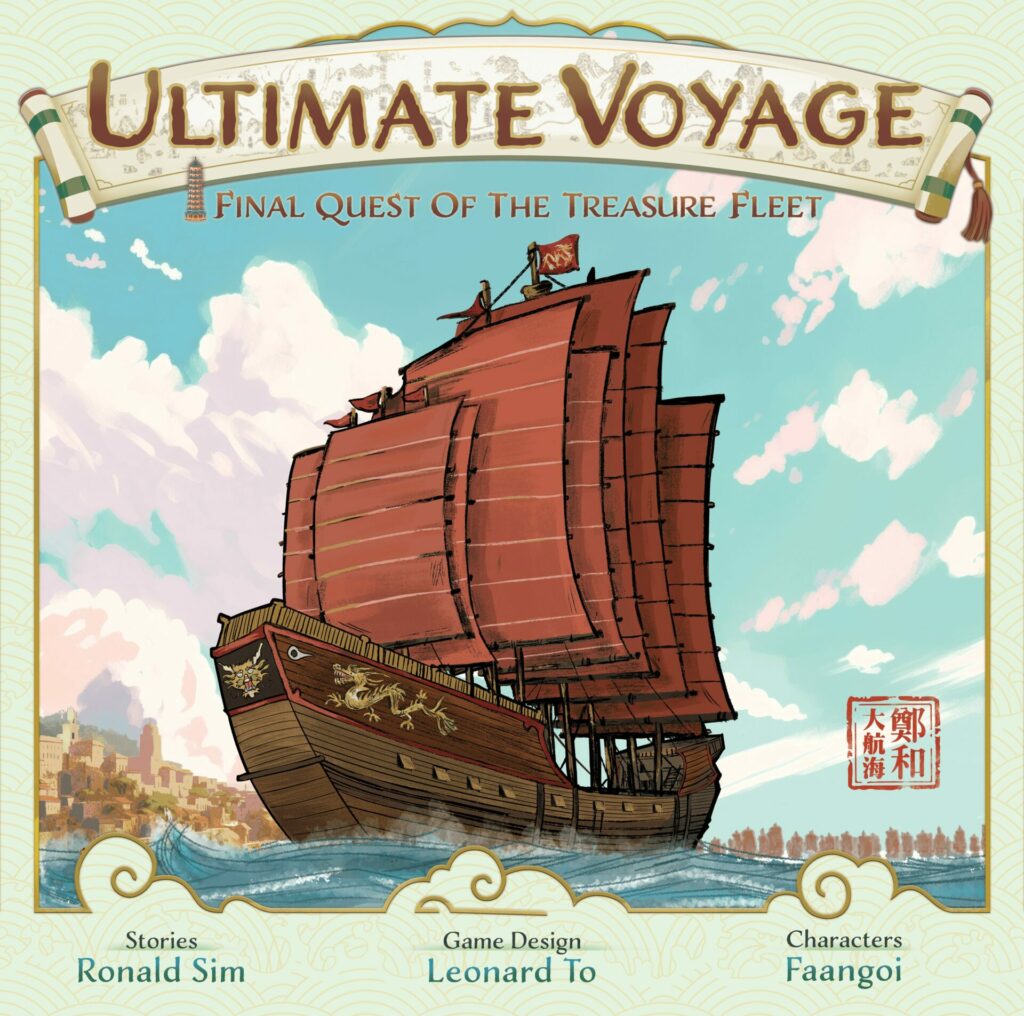
Ultimate Voyage (2025)
Designer: Leonard To
Publisher: Little Monks
Art: Faangoi
Players: 1-4
Playing time: 60-120 mins









